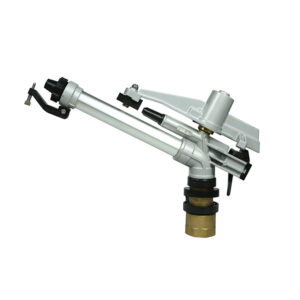Proper maintenance and cleaning of a spray gun are essential for ensuring its longevity and consistent performance.
Here’s how they contribute to the overall effectiveness of a spray gun:
Prevents Clogs: Regular cleaning prevents the buildup of dried paint or coating materials inside the spray gun. Clogs in the nozzle or other components can disrupt the spray pattern, leading to uneven application and reduced performance. By cleaning the spray gun after each use or as recommended by the manufacturer, you can prevent clogs and maintain consistent performance.
Improves Atomization: A clean spray gun ensures proper atomization of the liquid material being sprayed. Atomization refers to breaking down the liquid into fine particles for a smooth and even spray pattern. If the spray gun is not properly maintained, residue or dried paint can interfere with the atomization process, resulting in larger droplets, spattering, or an inconsistent finish. Regular cleaning helps maintain the spray gun’s ability to atomize effectively.
Extends Nozzle Life: The nozzle is a critical component of a spray gun, and its condition directly affects the spray pattern and performance. Proper maintenance, including regular cleaning, prevents the nozzle from becoming clogged or corroded. By keeping the nozzle clean, you can extend its lifespan and maintain a consistent spray pattern over time.
Ensures Material Compatibility: Different liquid materials, such as paints or coatings, may have varying chemical compositions. If the spray gun is not properly cleaned, residue from previous materials can mix with new ones, causing compatibility issues. This may result in clogs, poor adhesion, or compromised finish quality. Thorough cleaning between material changes helps ensure compatibility and consistent performance.
Preserves O-Rings and Seals: Spray guns contain O-rings and seals that prevent leaks and maintain proper pressure during operation. Regular cleaning and maintenance help remove debris or residue that can damage or degrade these components. Preserving the integrity of O-rings and seals ensures a tight seal, preventing leaks and maintaining the spray gun’s consistent performance.
Reduces Downtime: Maintaining a clean and well-maintained spray gun reduces the risk of unexpected malfunctions or performance issues during a project. By incorporating regular maintenance and cleaning into your routine, you can minimize the chances of downtime due to clogs, equipment failures, or inconsistent spraying. This promotes efficiency and productivity in your painting or coating tasks.
Enhances Safety: Proper maintenance and cleaning contribute to a safer work environment. Cleaning removes potentially hazardous materials, such as flammable solvents or toxic residues, from the spray gun. It also helps identify and address any damaged or malfunctioning parts that could pose safety risks. By ensuring the spray gun is in good condition, you reduce the likelihood of accidents or injuries during operation.
To maintain and clean a spray gun effectively, it is important to follow the manufacturer’s instructions and recommendations. This may involve disassembling the gun, using appropriate cleaning agents, and inspecting the various components for wear or damage. Regular maintenance and cleaning practices should be incorporated into your workflow to maximize the longevity and consistent performance of your spray gun.
What safety precautions should be followed when operating a spray gun, including the use of personal protective equipment and proper ventilation?
When operating a spray gun, it is crucial to prioritize safety to protect yourself and others from potential hazards.
Here are some important safety precautions to follow:
Personal Protective Equipment (PPE): Always wear appropriate personal protective equipment when operating a spray gun. This may include:
Safety goggles or a face shield to protect your eyes and face from overspray, splashes, or debris.
A respirator or mask designed for spray painting to protect your respiratory system from inhaling harmful fumes or particles.
Protective clothing, such as coveralls or a paint suit, to shield your skin and prevent contact with paint or coatings.
Chemical-resistant gloves to protect your hands from chemicals, solvents, or cleaning agents.
Safety boots or shoes to protect your feet from potential spills or falling objects.
Ventilation: Ensure proper ventilation in the spray area to minimize the accumulation of fumes and maintain fresh air circulation. This can be achieved by:
Working in a well-ventilated area with open doors, windows, or exhaust fans.
Using local exhaust ventilation systems, spray gun such as spray booths or ventilation hoods, to capture and remove airborne particles and fumes directly from the spray area.
Avoiding confined spaces or areas with limited airflow.
Fire Safety: Flammable materials, such as solvents or paint thinners, are often used in spray painting operations. To prevent fire hazards:
Keep flammable materials away from ignition sources, such as open flames, sparks, or hot surfaces.
Ensure that the spray area is free from potential sources of ignition, such as electrical equipment that is not explosion-proof.
Have appropriate fire extinguishing equipment readily available in case of emergencies.
Safe Work Practices: Follow these general safety guidelines when operating a spray gun:
Read and understand the manufacturer’s instructions and safety guidelines before using the spray gun.
Never point the spray gun at yourself or others.
Keep your fingers away from the trigger when not actively spraying.
Use the spray gun only for its intended purpose and within its recommended operating parameters, such as air pressure and nozzle size.
Avoid overexertion and take regular breaks to prevent fatigue and maintain focus.
Clean up spills promptly and dispose of waste materials properly.
Training and Education: Properly trained personnel are essential for safe spray gun operation. Ensure that operators are trained in the safe use of spray guns, including understanding the hazards associated with the materials being used, proper handling, and emergency response procedures.
Remember, safety should always be the top priority when working with spray guns. By following these precautions and using common sense, you can minimize the risks associated with spray painting operations and create a safer working environment.
